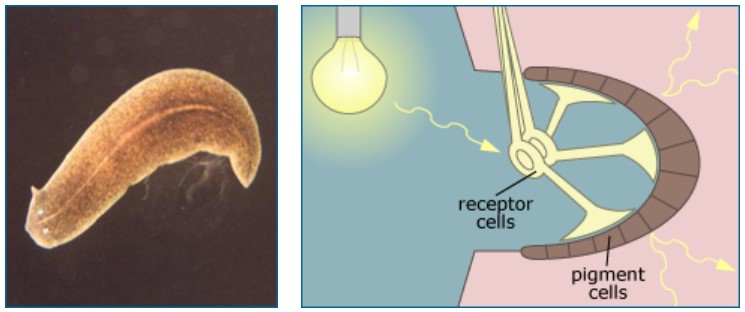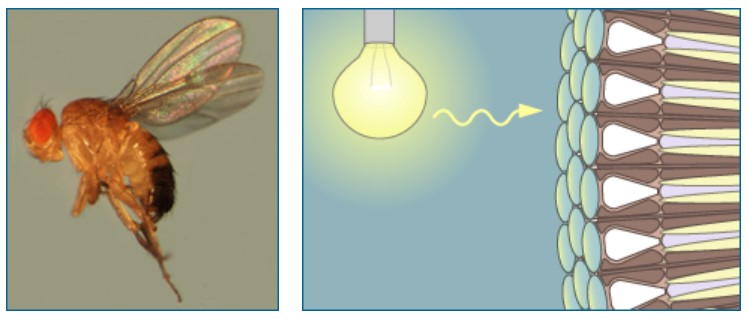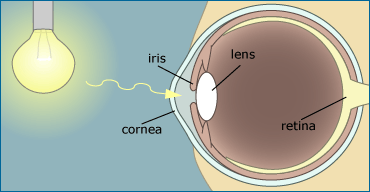All eyes sense light — but they do this in many different ways. Consider these examples:
- Turbellarian worm eyes:
The eye of the turbellarian worm shown below is a simple cup. The pigment cell blocks light from all directions but one. Light from that direction can enter the eye cup to reach the light receptor cells. This sort of eye doesn’t form an image, but it does let the animal sense the intensity and source of light.
Left, a turbellarian worm. Right, a turbellarian eye. Turbellarian worm photo provided by Mauricio A. Muñoz. - Human eyes:
The human eye, on the other hand, relies on more machinery. We have a lens and cornea, which help focus light, and a mobile iris, which controls the amount of light entering the eye much like a shutter on a camera. The many light-sensing cells at the back of our eyeballs form a structure called the retina, which collects information that the brain can assemble into an image. Many different animals have this sort of single-lens, image-forming eye. - Fruit fly eyes:
The fruit fly eye contains hundreds of light-sensing units (called ommatidia), each with its own lens and set of light receptor cells. Pigment cells separate each unit in the eye and block light from entering the eye from certain directions. The fly brain gathers information from all these different units and pieces it together into a single image.
Left, a fruit fly. Right, a fruit fly eye. Fruit fly photo by Kristina Yu, © 2005 Exploratorium, www.exploratorium.edu, made possible with a Science Education Partnership Award (SEPA) from the National Center for Research Resources of the National Institutes of Health and support from The David and Lucile Packard Foundation.
Take a side trip to learn more about how your own eyes work.
Or learn about the compound eyes of stomatopods. These lobster-like crustaceans are quick-draw hunters with fascinating behaviors and impressive vision. To learn more about them and their amazing compound eyes, visit Secrets of the Stomatopod on the UC Museum of Paleontology website.


